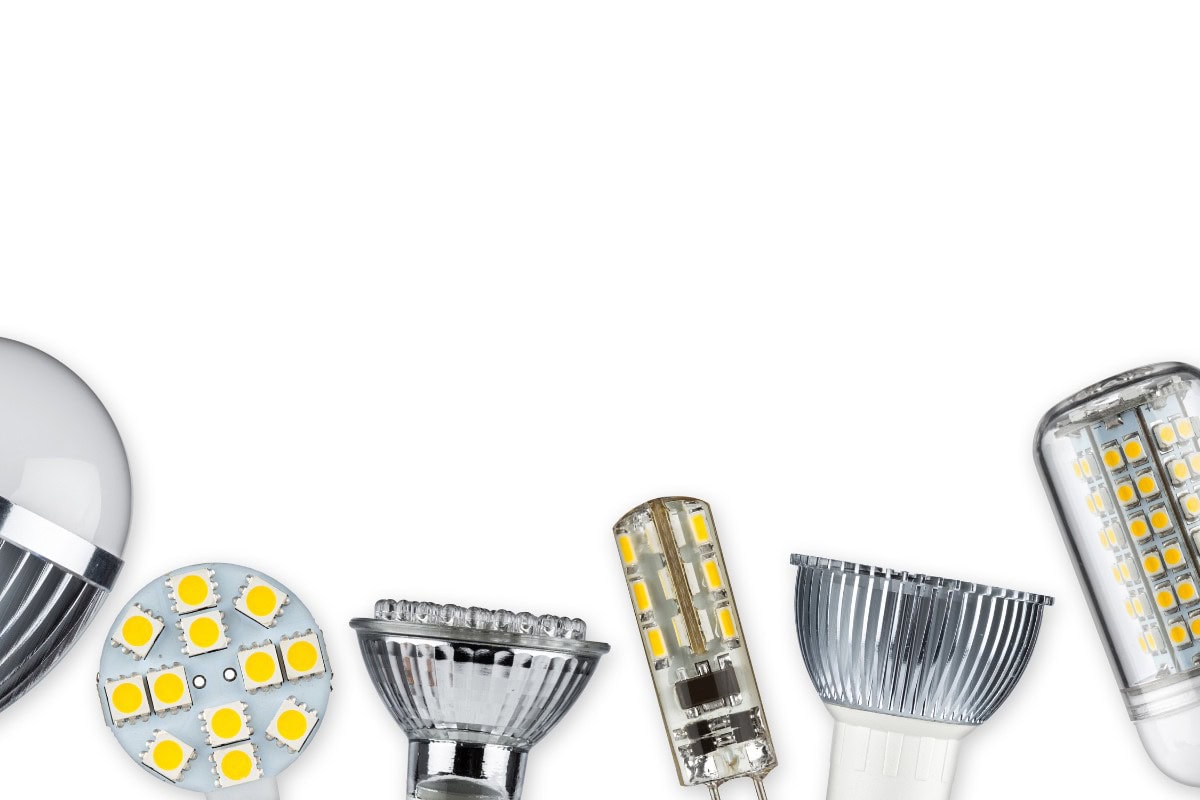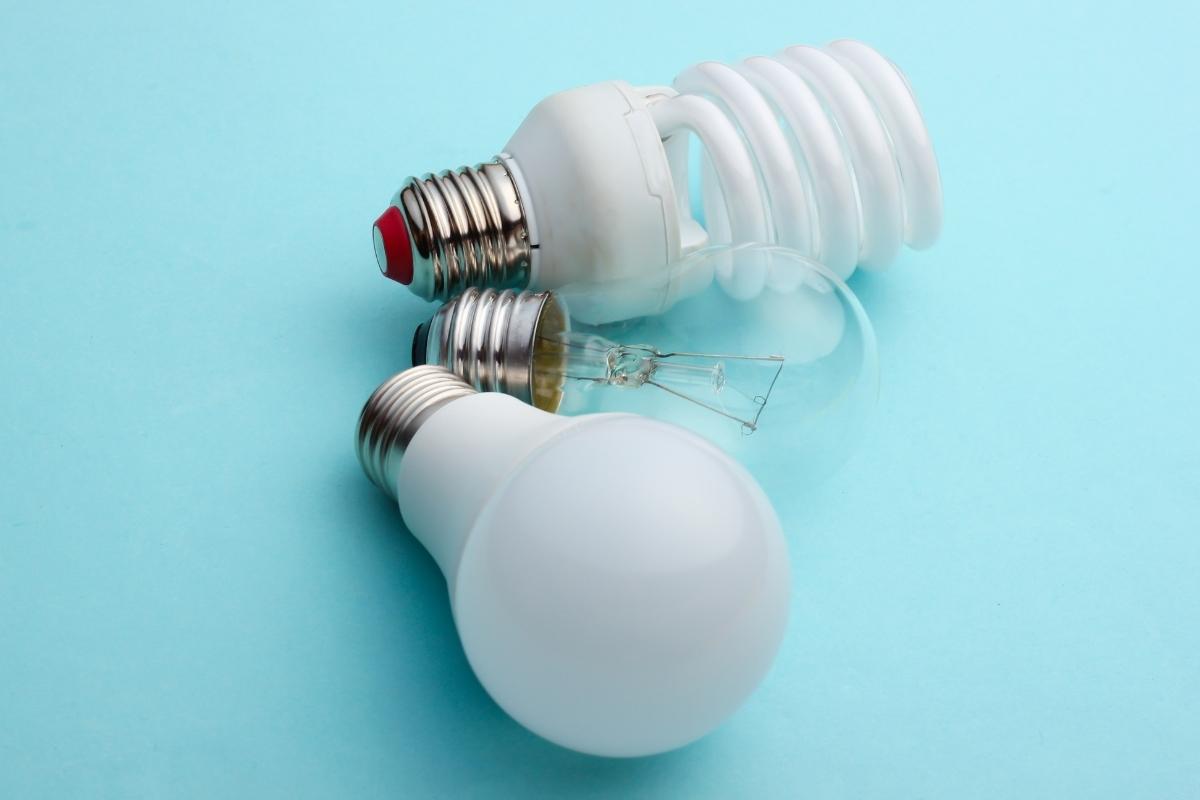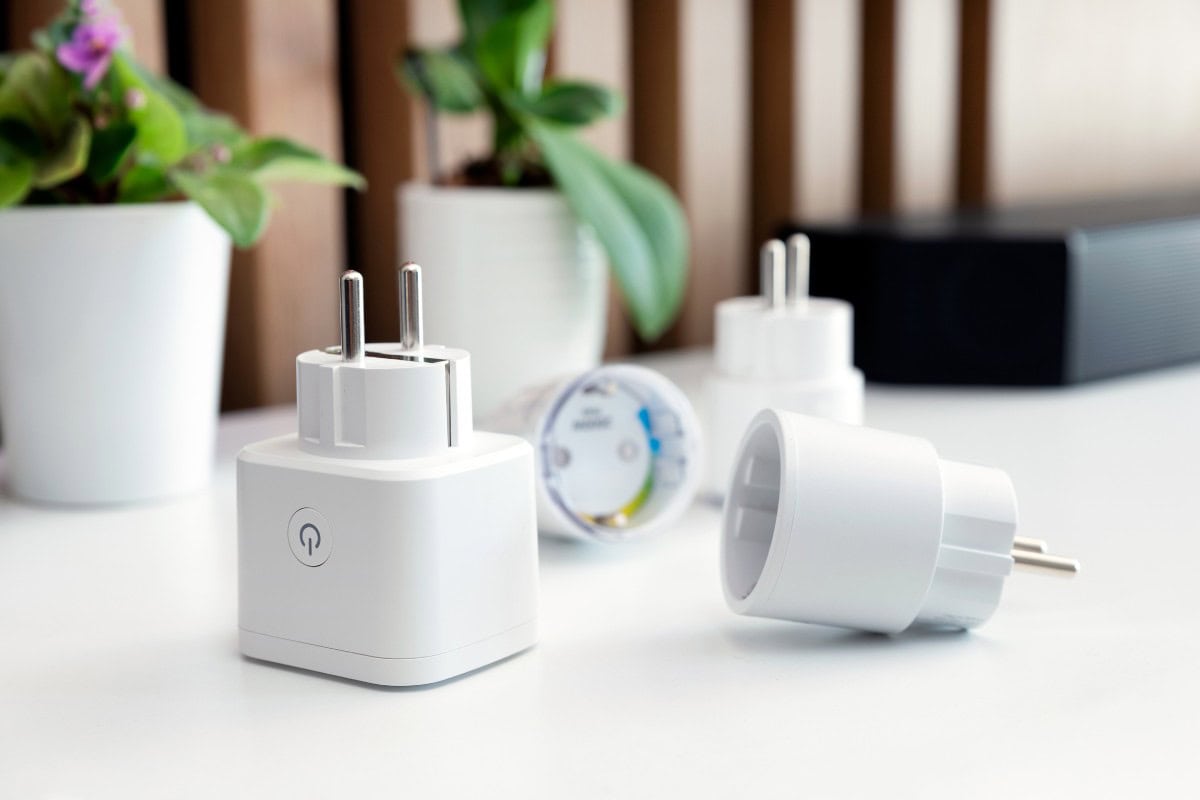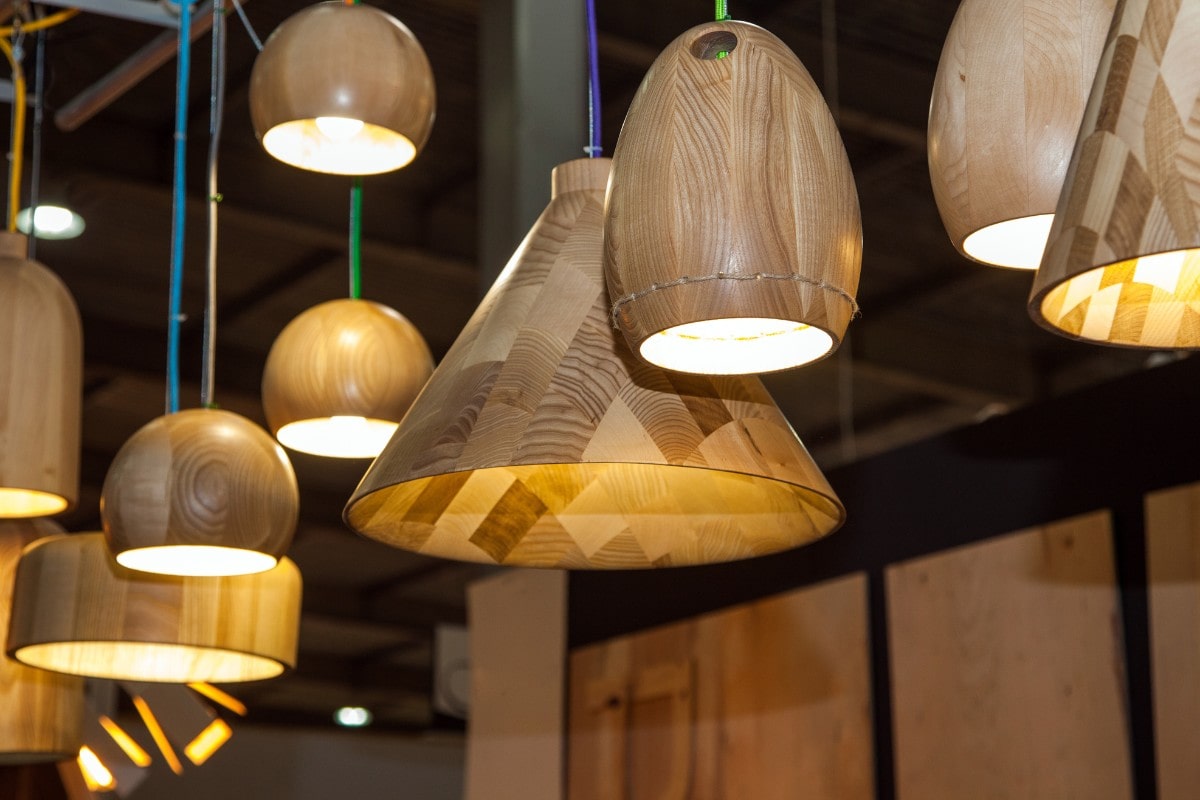If you are not entirely clear on how LED lights can be incorporated into your interior design, don’t fret. LED technology has evolved so quickly in the past few years, the idea of switching over from incandescent or CFLs hasn’t quite had the chance to take root everywhere just yet.
But make no mistake, the LED revolution is here. This massive shift in lighting technology offers exciting opportunities on so many different fronts, including design, light layering, energy efficiency, and the ability to light up places we never could before.
If you are curious about what LED lights could do in your home, or if you are thinking about making the switch, this is your complete guide. We have gathered everything you need to know before deciding what is best for your particular situation.
So, let’s start at the beginning.
The History of LED Lighting
It may shock you to learn that LED lighting is only the fourth leap we have ever taken as a species in terms of illumination. And yes, we are taking this all the way back to prehistoric man and the discovery of fire. That was the first step in our never-ending quest to conquer the darkness, and control illumination, and indeed, fire remained the main source of illumination from prehistory, right up until the late 1800s.
Our next big move came in 1879 when Thomas Edison filed his patent for the incandescent electric light bulb. He used a filament made of carbonized cotton thread, contained in a glass vacuum bulb. When he applied voltage, the filament glowed a warm yellow-orange, which was amplified by the bulb. Early versions of the Edison light bulb would burn out in a matter of hours. Over the years, longer-lasting versions were developed, making it more practical for use in the average home.
The 1930s saw the dawn of electric induced fluorescence (better known as fluorescent lighting) developed by General Electric. This type of lighting became popular in industrial or office settings, as it was less costly, and could illuminate a larger area.
Indeed, throughout most of your life, every book you have read, every play you’ve watched, and every city street you’ve walked has probably been illuminated by either incandescent or fluorescent light bulbs.
Then, in 1963 an engineer working at General Electric named Nick Holonyak developed the light emitting diode, or LED. Whereas older forms of lighting relied mainly on heat to produce a glow, LEDs did something completely different.
By creating very precise junctions for semiconductors, photons (light particles) are emitted thanks to amazing things going on at the quantum level. However, just like Edison’s first light bulb was terribly inefficient, the first iterations of LEDs suffered the same reputation in the beginning. Not only were they significantly more expensive than other light sources, they would burn out quicker and consume much more energy.
They went back to the drawing board again and again.
The speed with which we have perfected the LED into this paragon of energy efficiency really is astounding. In fact, an LED light today is approximately 1000 times more efficient than its 1968 prototype. A 1000X improvement in just 50 years! And, thanks to market competition, LED lighting is now affordable to the average homeowner. The cost for an LED light bulb is just a few dollars.
Until recently, people were used to seeing LED lights used in, say, their iPhone screen, or perhaps those bright holiday lights which seem to significantly outshine the house using incandescent lights across the street. But the tide is turning. Universities, stadiums, even cities such as Boston and Los Angeles are switching their lighting over completely to LEDs.
Thanks to recent developments in LED technology, we can now take advantage of this energy-efficient and brightly luminous resource in our homes.
Advantages of LED Lighting
It can sometimes take a good bit of convincing to get someone to try something new. However, LED technology really seems to make its own argument. Companies, museums, schools, grocery stores, retail spaces, and entertainment venues are beginning to rid themselves entirely of incandescent and CFL bulbs, choosing instead to completely replace everything with LED lighting.
Clearly, these are huge undertakings that probably require a good deal of initial expense and planning.
So why do it? Consider the following advantages.
Lower Electricity Costs
On average, you will spend $200 less in energy usage and replacement bulbs for every LED bulb in your home.
Long Lifespan
The difference in bulb lifetime is possibly the most significant feature. An incandescent bulb has an average lifetime of approximately 750 hours. In other words, a little over one month, assuming it was left burning full-time (not recommended). CFL bulbs offer a pretty large jump in lifetime, clocking in at closer to 10,000 hours – or somewhere between 13 and 14 months if they were left burning continually. But the real star is an LED light bulb which offers an astonishing 50,000+ hour lifetime – or just over 5 1/2 years of constant illumination.
Safer for the Environment
CFL bulbs are known to contain a small amount of mercury. While this mercury will not make its way into your home while the bulb is intact, a broken CFL bulb will release a small amount of mercury into the air. There is some debate as to whether or not CFL bulbs are adding more mercury to landfills, assuming they are not properly recycled. LED bulbs contain no mercury whatsoever, meaning they are safer for the overall environment, as well as your indoor environment.
High-Quality Light
The light emitted from LED bulbs is very similar to natural daylight. Growing up, we have all gotten used to the differences between indoor and outdoor lighting. One of the advantages of LED lighting is that the amount of illumination inside your home will be comparable to the sunlight coming in through the windows. You can effectively eliminate those pesky areas of “bad lighting.”
Less Heat
If you have ever accidentally touched the outside of a desk lamp containing an incandescent bulb, chances are you got a bit burned. Both LED and CFL bulbs rely on heat to produce light. Any type of heat generating source in your home is not only consuming excessive energy, but also potentially creating hazards. Plus, less heat means LEDs are less costly to power.
Comparison Shopping
This is the point where many homeowners can get tripped up, even if they are conceptually sold on the idea of LED lights in their home. Unlike shopping for other aspects of your home – a new couch for example – it’s harder to visualize a 1:1 comparison when looking at lighting. Whereas you will be able to tell right away whether or not the new couch you are considering is superior to the one you already have, LED lighting is measured in completely different ways from conventional lighting.
So, first things first, you have to do away with the idea of wattage. In conventional lighting, the higher the wattage, the brighter the bulb – at least generally speaking. In reality, wattage is an indication of how much energy the light bulb draws, more so than an indicator of brightness. Nevertheless, a room lit by a 40-watt bulb would be noticeably dimmer than a room lit by a 100-watt bulb.
So, when you begin seeing extremely low wattage numbers such as 20, 16, or even 8, it can sometimes send the wrong impression that these will be extremely weak, dim lights, and therefore not appropriate replacements for your home. But this is incorrect.
As mentioned above, wattage merely reflects the amount of energy being drawn by a light bulb, regardless of type. Since LED bulbs draw significantly less power, they will be rated at a lower wattage. If you’ve already made the switch to CFLs a few years ago, you probably got used to seeing some lower wattage numbers on your light bulb boxes.
Really, what anyone wants to know when they shop for lighting is “how bright is this?” To determine that, you need to get familiar with the concept of lumens.
Lumens are the measurement of how bright a given light is. The higher the lumens, the brighter the bulb. For instance, a 100-watt incandescent light bulb might give off approximately 1600 lumens (abbreviated as lm.). The same number of lumens will also be given off by an LED light bulb in the 16 to 20-watt range.
Another thing to be prepared for when comparison shopping is the color or temperature that the LED lights will give off. Incandescent light bulbs tend to universally give off a warm, yellowish light, and many people have gotten used to this in their homes.
If you are looking to maintain a similar light level and light color in your home, you will want to look for LED lights that are labeled as “soft white,” or “warm white.” Lights that are labeled as “bright white” and may seem a bit cold, and might be more appropriate as accent lighting, not your main light source.
One last thing you should know. Sometimes, it can feel really difficult to let go of traditional things, and embrace the future – and yes, that feeling extends to something as mundane as light bulbs. If you are still not entirely on board with the LED phenomenon, consider this: many countries are moving to completely phase out incandescent bulbs because they are less efficient, burn more coal, and cost the consumer more money. In fact, a bill was passed in 2007 stating that the United States would begin doing just that in 2012. Five years on, and a global movement towards more efficient lighting seems to be well underway.
So, it might be a good idea to begin slowly. Perhaps replace a few light bulbs here and there with LED lights to ease into the change. Once you see the more natural light and the lower electricity bills, you might change your mind.
Applications for LED Lights
Thanks to the continual streamlining and perfecting of LED technology, there are now everyday applications for LEDs all around us.
For instance, many cities and municipalities have embraced the longer life and lower energy cost of LEDs and use them to power streetlights and traffic signals. This can help increase the overall safety of a given area, as you are far less likely to run across any burned out bulbs, or dimly lit areas.
There are also many commercial applications for LED lights. Buildings and offices can use them both as interior and exterior lights. LEDs can also be used in signage, or to more precisely illuminate retail displays or work areas.
You’ll even find LED lights being used in the automotive industry. If you have a relatively new car, the interior lights might very well be LEDs. These could lessen the strain on your car’s electrical system and are far less likely to burn out over the life of the vehicle.
Healthcare is another huge market for LEDs. Because the light emitted by LEDs does not contain any harmful UV rays, it is safe to use in more medical applications. The bright, natural light creates better visibility for practitioners in everything from routine exams to life-saving surgery.
But the average homeowner is more concerned about how LED technology can be applied in their home. For that, there are four main areas to consider.
Ambient Lighting
LEDs are bright and efficient enough to act as the main light source for a given space, at a fraction of the energy cost. Ambient lighting could come from overhead lights, track lighting, pendants, chandeliers or recessed fixtures.
Task Lighting
The brightness and precision of LED lights make them perfect for illuminating certain task or work areas. For instance, a swing-arm floor lamp for reading, or an under-cabinet lighting strip to illuminate your counter space.
Accent Lighting
Accent lighting should be at least three times brighter than the ambient lighting in the room, and LED lights can achieve that brightness. Accent lighting could come in the form of a picture light, vanity lights, wall sconces, or strategically aimed eyeball fixtures.
Outdoor/Landscape Lighting
LEDs make excellent spotlights or floodlights to help illuminate yards, porches, patios, and driveways. The brightness helps increase safety around your home, or can tastefully highlight specific landscape features. Spotlights can be aimed at ornamental trees, gazebos, etc., and of course, many holiday lights are now available in the LED option.
LED technology has moved quickly, and it has progressed to the point where nearly any lighting application can be replaced with LEDs. This will drastically help reduce our overall energy consumption, our energy bills, and our waste.
Common Misconceptions
As with any new technology, there are a lot of rumors out there concerning LEDs. Here are some of the most common misconceptions
LEDs Are All Cold, White Light
The first iterations of the LED lights came in what can only be described as a rather harsh, silvery blue color that seemed impossibly bright. And while that type of light might look cool as part of a video game, or part of a light display, using it to illuminate a room created an unpleasant look to everything.
The good news is that LED lights are now available in nearly any color you can imagine, including the “warm white” or “soft white” that we have come to associate with pleasant indoor lighting. LED lights do not need any type of filter to create their color. Rather, each LED light is programmed to be a certain color. You can also find some LED lights which switch between colors.
LEDs Are Expensive
Again, LEDs have come a very long way in a very short time. If you haven’t checked on LED light prices in a few years, you might be pretty surprised to see how low they are now. In fact, LED bulb prices have dropped nearly 90% in the space of about eight years. Increases in efficiency, production, and competition have all created the perfect storm to drive prices down. Now consumers can purchase some LED light bulbs for prices comparable to those of CFL or incandescent lights.
LEDs Emit No Heat Whatsoever
It’s true that LED lights are often cool to the touch, but this does not mean they emit zero heat. Anything which consumes electricity will begin to gather heat, and LED lights are no exception. The difference is, their efficiency is such that they build up significantly less heat than an incandescent or fluorescent bulb would.
Much of the heat buildup by LED lights is handled by a heatsink placed in the base of the bulb. For this reason, it is important that you find out whether or not the LED bulbs you are purchasing are safe to be used in completely enclosed light fixtures. They do give off heat, and if the bulb is not rated to be completely enclosed, it will damage the bulb components and shorten the life of the light.
LEDs Are Only Good for Illuminating Small Areas
LED lights can be directed and aimed much better than older style lights. This increased accuracy has led to the misconception that LED lights can only be used for precision purposes, and not as general, ambient light. This is incorrect. LED lights can replace the bulbs in overhead lights, lamp lights, sconces, pendants, track lighting, etc. LED lights rated for interior household use will do a great job of illuminating a large area.
LED Bulbs Are Unattractive (or Way Too Small)
The light emitting portion of an LED bulb can be quite small, but that does not mean that the bulb itself must also be small. True, some of the smaller holiday lights you see will be tiny LEDs, but this is not the only type of bulb available.
LED lights come in much the same shape as incandescent lights, meaning they are appropriate even for decorative chandeliers, where the bulbs add to the beauty of the fixture.
Your Existing Lights Are Illegal
In 2007, President George W. Bush signed the Energy Independence and Security Act (EISA) into law. One of the stated goals was to phase out inefficient incandescent lighting, which began in 2011. While the US has largely stopped importing or manufacturing inefficient incandescent light bulbs, having a few lying around the house does not put you in violation of any law.
In fact, incandescent light bulbs are still available on the store shelves right now. Many of them have been retooled to increase their overall efficiency, putting them more in line with the EISA. So, while LED lighting is becoming more popular, incandescent lighting is still around for the time being, and owning incandescent bulbs is not illegal.
Things to Know Before Buying LED Bulbs
Make Sure Your Existing Light Fixtures are Compatible
As with any light bulb, you want to make sure that your placement will fit into the fixture. Make sure you are getting the correct size base (i.e. you’re not trying to screw a skinny chandelier light into a standard lamp fixture).
Otherwise, remember the importance of heat dissipation in LED lights. As previously mentioned, fully enclosed or even deeply recessed lighting fixtures may not provide enough space for the LED bulb to efficiently give off its heat. If you have an enclosed or recessed fixture, look for LEDs that are specifically compatible with that type of housing. If you are unsure, it always helps to ask a sales associate or to consult an electrician.
LED Bulbs Cost More
You’ve read a lot so far about how much money LEDs will save you, but it’s important to keep in mind those savings will happen in the long run. There’s no denying it: a five dollar LED bulb is going to be more expensive than a $.79 incandescent bulb. So, if you are looking to replace every light bulb in your home with an appropriate LED counterpart, you may be looking at up to five times the cost in bulbs alone.
Like with any new and improved technology, the bulk of the investment happens up front. The idea being that the initial costs will be amortized over the months and years of extra bulb life and lower electric bills. LED bulbs more than pay for themselves over time, but be prepared to pay the extra cost in the beginning.
Not All LED Light Bulbs Can be Dimmed
Some people, when installing their new LED bulbs for the first time notice a flickering, or perhaps a humming. This is most likely happening because they have installed a new LED light to a dimmer switch which was designed with incandescent bulbs in mind.
LED lights work differently from incandescent lights, as outlined above. Traditional dimmer switches work by reducing the amount of energy sent to the bulb. However, LED lights do not draw nearly as much energy in the first place, so a traditional dimming switch will not work as advertised.
You have two choices in this scenario.
You can look for LED lights which advertise their compatibility with traditional dimmer switches, and purchase those. Or, you can purchase regular LED bulbs, and have your dimmer switches swapped out for up to date, LED dimmer switches.
LED Lights May be Smart Home Compatible
If you are the “bells and whistles” type, LED lights were made for you. Often, LED lights can be made compatible with smartphone technology, or other remote access such as a laptop or tablet. With prices continuing to fall, you may be pleasantly surprised to learn how connected your home can be with a relatively small investment.
Long Term Recommendations
After looking at all the data, it is evident that the LED revolution has arrived, and our best bet is to switch over to this new technology as soon as it is appropriate to do so.
LED lights allow consumers the opportunity to be more environmentally responsible, and lower their own electric bills at the same time. Energy consumption has been a global concern for many years, and any technology which helps lessen the burden on our natural resources can only be good.
However, unlike other changes such as converting to solar or wind power, LED light bulbs are more accessible for the average homeowner.
So, while you do not have to make the change all at once, remember that every incandescent or CFL bulb in your home which you replace with an LED will be saving you money, lowering your energy consumption, and making your home a more efficient place to live.









